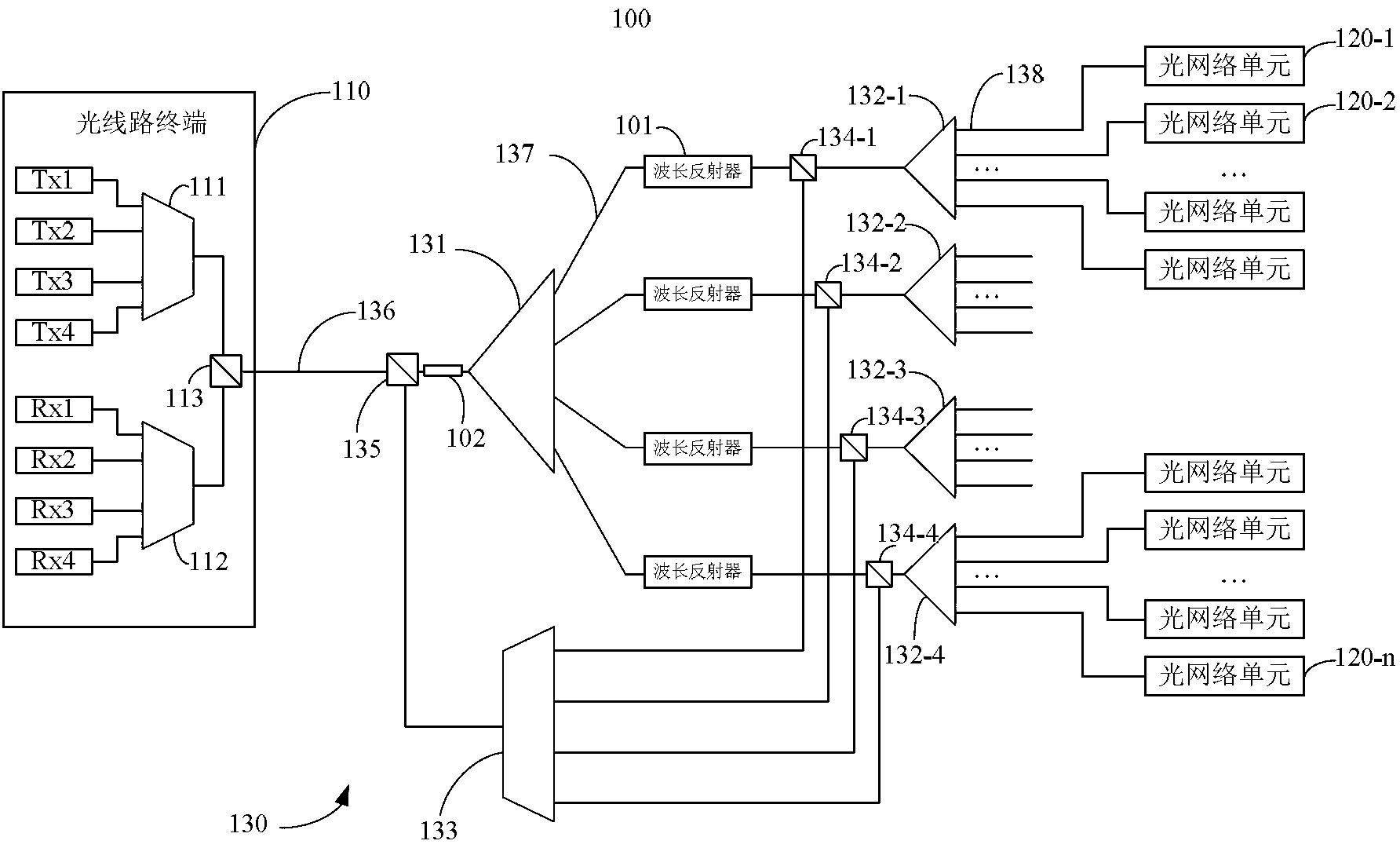Multi-wavelength passive optical network system
A passive optical network and multi-wavelength technology, which is applied in the field of optical access, can solve the problems of time division characteristics affecting the bandwidth of optical network units, and achieve the effect of meeting the growth demand and improving the overall bandwidth
- Summary
- Abstract
- Description
- Claims
- Application Information
AI Technical Summary
Problems solved by technology
Method used
Image
Examples
Embodiment Construction
[0016] The following will clearly and completely describe the technical solutions in the embodiments of the present invention. Obviously, the described embodiments are only some of the embodiments of the present invention, rather than all the embodiments. Based on the embodiments of the present invention, all other embodiments obtained by persons of ordinary skill in the art without making creative efforts belong to the protection scope of the present invention.
[0017] see figure 1 , which is a schematic diagram of a preferred embodiment of the multi-wavelength passive optical network system provided by the present invention. The passive optical network system 100 includes at least one optical line terminal (OLT) 110 , a plurality of optical network units (ONU) 120 - 1 - 120 -n and an optical distribution network (ODN) 130 . The optical line terminal 110 is connected to the plurality of optical network units 120-1˜120-n in a point-to-multipoint manner through the optical di...
PUM
 Login to View More
Login to View More Abstract
Description
Claims
Application Information
 Login to View More
Login to View More - R&D
- Intellectual Property
- Life Sciences
- Materials
- Tech Scout
- Unparalleled Data Quality
- Higher Quality Content
- 60% Fewer Hallucinations
Browse by: Latest US Patents, China's latest patents, Technical Efficacy Thesaurus, Application Domain, Technology Topic, Popular Technical Reports.
© 2025 PatSnap. All rights reserved.Legal|Privacy policy|Modern Slavery Act Transparency Statement|Sitemap|About US| Contact US: help@patsnap.com

